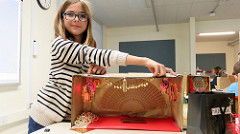How are PCBs made?
What Is A Printed Circuit Board?
A printed circuit board is an electronic circuit that is mounted on a board of a non-conducting material and the electronic components on the board are connected by creating conducting channels. Printed circuit boards come in 3 basic varieties, single-sided, two-sided, and multi-layered. The conductive connections are made of copper, chrome, nickel, or aluminum. These printed circuit boards are widely used in computers, telephones, home equipment, and a lot of other electronic components.
Printed Circuit Board Manufacturing
The manufacture of printed circuit boards starts with a thin sheet of plastic that is coated with a sheet of copper foil. Holes are then made onto this board using a drilling machine. The holes are used to build up electronic components on the circuit board and to provide a conductive capability between layers. Once the drilling process is over, the board is cleaned to remove the copper particles. After being scrubbed this way, an additional layer of copper might be applied. To provide a conductive capacity through the holes, electroless copper plating is used during printed circuit board manufacturing. The electroless copper plating is made of four basic operations, cleaning, activation, acceleration, and deposition. This is followed by the application of a plating resistant material and the panel is photo-imaged to develop the circuit design. After this, the circuit board is electroplated with copper. This layer of copper is coated with tin to function as an etch resist. This plating resist is then removed so that it shows up copper that does not form a part of the ultimate circuit design. This additional copper is got rid of through etching. At the end of this, the final circuit design is clearly seen. The etching solutions most commonly used utilize ammonia. To avoid the disposal problems related to ammonia, you can also make use of hydrogen peroxide or sulfuric acid based etching solutions. However, with these ingredients, etching can be a very slow process and the temperatures might get uncontrollable.
Pollutants created by the printed circuit board manufacturing process
The pollutants are created during the following stages of a printed circuit board manufacturing process:
1. Scrubbing & Surface Preparation – Majority of the pollutants created during printed circuit board manufacturing are due to this process. During this stage, the pollutants are emissions in the form of acid fumes and organic vapors. Particulate matter will be emitted during the drilling of the circuit boards.
2. Electroless copper plating – The waste emitted during this stage consists of catalyst solution, acid solution, and waste water.
3. Circuit board designing and printing – Waste in the form of chlorinated hydrocarbons, spent acid solution, and organic solvents.
4. Electroplating
5. Etching
A very common waste treatment during printed circuit board manufacturing utilizes pH adjustment and the use of chemicals that reacts with the soluble pollutants to get rid of the dissolved contaminants.
